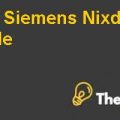
INTRODUCTION
Pioneer Petroleum was established in 1924 by performing a merger with some of the solely independent companies. The firms were in the same industry sector in which Pioneer Petroleum was operating, which includes the pipeline transportation, the refinement of oil and industrial chemical fields.
Pioneer Petroleum is also a multinational company that has the capability of capitalizing over the investments across the globe. The industry in which Pioneer’s gasoline is operating is among the cleanest burning fuels. Moreover, it has a greater focus over the environmental factors because they strictly abide by the guidelines based upon the environment.
Apart from that, it can be seen by taking account of the efficient plants that are capable of producing the products, which will not contribute to the increased rate of pollution. On the other hand, Pioneer Petroleum has its involvement in the devilment and as well as the exploration processes.
By taking into consideration the performance of Pioneer Petroleum, it can be seen that it has expanded itself both vertical and horizontal directions, which means that it has gone for a diversification approach. Hence, by making use of the availability of vast variety of sources and the capital that Pioneer petroleum it has, there is a need to take into consideration several opportunities and different projects that will prove beneficial for the company.
Moreover, Pioneer Petroleum is involved in the exploration, the development process, the production, transportation and as well as marketing.
PROBLEM STATEMENT
As per the case the current situation is requires making a decision by Pioneer Petroleum to choose one alternative. The options that are available to the company include the company-wide cut-off rate that is based on overall WACC.
The second option is to make the use of multiple rates that have the ability to reflect the risk profit characteristics related to various divisions and the cost of capital will be based on these divisions. Hence, there is a need to prefer only one option that will result in the increased benefits of the shareholders of Pioneer Petroleum.
ANALYSIS
WACC via DIVIDEND GROWTH MODEL & WACC (AVERAGE DIVDEND GROWTH)
Firstly, the weighted average cost of capital has been calculated by Pioneer petroleum as it can be seen that the WACC is almost 9.00%. The market value of equity and the market value of debt are assumed to be 50% by the management of Pioneer Petroleum.
Moreover, the estimated future after-tax cost is 7.90% and the cost of equity percentage is almost 10%. The tax rate that has been used by the company is 34%. In addition to this, the assigning of after-tax cost of debt was not so complicated(Ruback).
However, the coupon rate that has been used is 12% by assuming the continuation of the debt policy that has been adopted by Pioneer Petroleum. Despite this, there has been a long debate over the use of current earnings yield based on the cost as a cost for the retained earnings an also new equity. It was also mentioned that the dilution of earnings per share is not going to take place even if the company was able to achieve the returns based on the new equity.
Moreover, the percentage based on the weighted average cost of capital will inform the company about the discount rate that is used for the calculation of Net Present value. This is also considered to be the measurement of cost of equity of capital (Ke) and as well as the cost of debt (Kd)(Da, 2009).
On the other hand, if the value of NPV is negative, then it shows that the different profit centers belong to the same class of risk. This means that the project is going to be rejected. Despite this, by taking account the net income for the time period of 10 years, it can be seen that it’s showing an increasing trend and the percentage with which it is increasing by 37%.
Moreover, the earnings per share are also showing an increasing trend and the increasing percentage is approximately 82%. Apart from that, the dividend per share is showing an increasing rate of 40%. Lastly, the return on book value of equity is almost 57% rise and in the fiscal year, the percentage was 15.90% however,in 1990 it became 25.00%.
It is also worth mentioning that as per the exhibits, the calculations of the weighted average cost of capital via dividend growth model can be seen. However, the dividend growth rate as per the case is 10.00%. The stock price that is used is $63 which is also mentioned in the case.............................
This is just a sample partial case solution. Please place the order on the website to order your own originally done case solution.











